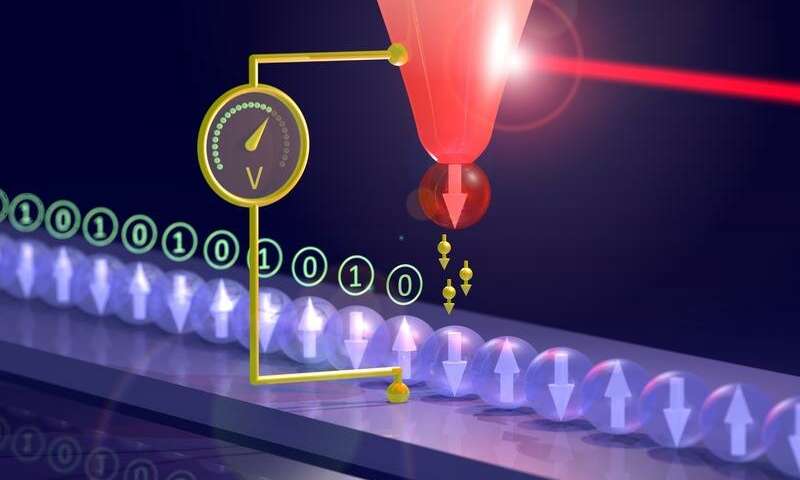Scientists of the Department of Physics at the University of Hamburg, Germany, detected the magnetic states of atoms on a surface using only heat. The respective study is published in a recent volume of Science. A magnetic needle heated by a laser beam was placed in close proximity to a magnetic surface with a gap of only a few atoms width. The temperature difference between the needle and the surface generates an electric voltage. Scanning the needle across the surface, the scientists showed that this thermovoltage depends on the magnetic orientation of the individual atom below the needle.
“With this concept, we determined the surface magnetism with atomic accuracy without directly contacting or strongly interacting with the surface,” says Cody Friesen, the main author of the study. Conventional techniques require an electric current for this, which causes undesirable heating effects. In contrast, the new approach does not depend on a current. In the future, miniaturized magnetic sensors in integrated circuits may operate without a power supply and without generating waste heat. Instead, heat generated inside a device is directed toward the sensor, which thermally senses the magnetic orientation of an atom and translates it into digital information.
“Our investigations show that the process heat generated in integrated circuits can be used for very energy-efficient computing,” says Dr. Stefan Krause, who supervised the project within the research group of Prof. Roland Wiesendanger.
Today, the ever increasing amount of data generation and the enhancement of processing speeds demand a constant miniaturization of devices, which leads to higher current densities and strong heat generation inside the devices. The new technique from Hamburg could make information technology more energy efficient and thus environmentally friendly. Apart from ecological aspects, it would have meaningful implications for everyday life: For instance, smartphones would need less frequent recharging because of their reduced power consumption.
Provided by: University of Hamburg
Find your dream job in the space industry. Check our Space Job Board »
More information: Cody Friesen et al. Magneto-Seebeck tunneling on the atomic scale. Science (2019). DOI: 10.1126/science.aat7234
Image: Schematic iillustration of the experimental setup: The tip of the scanning tunneling microscope is heated by a laser beam, resulting in a voltage that is used to read information from magnetic atoms.
Credit: Informationsdienst Wissenschaft











